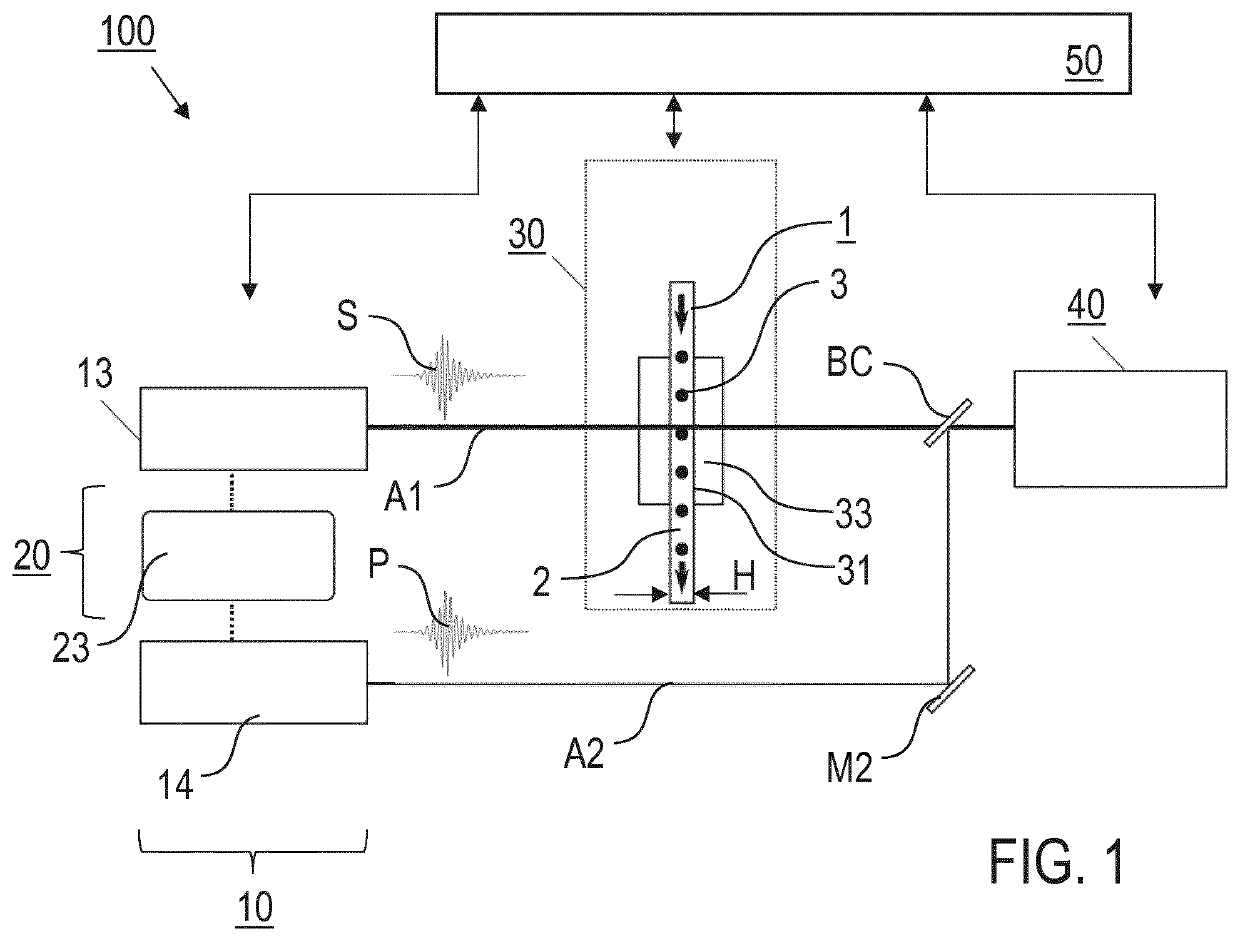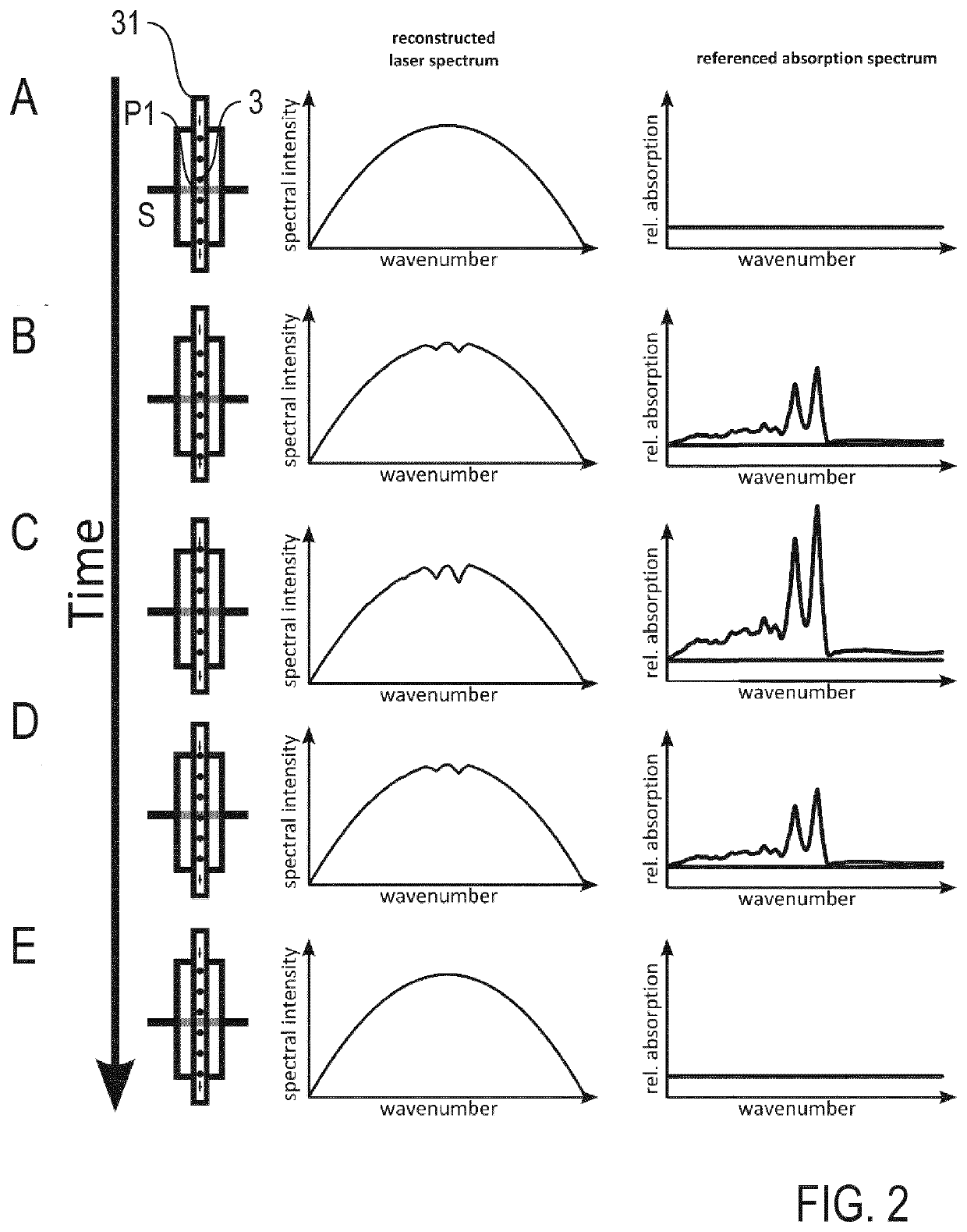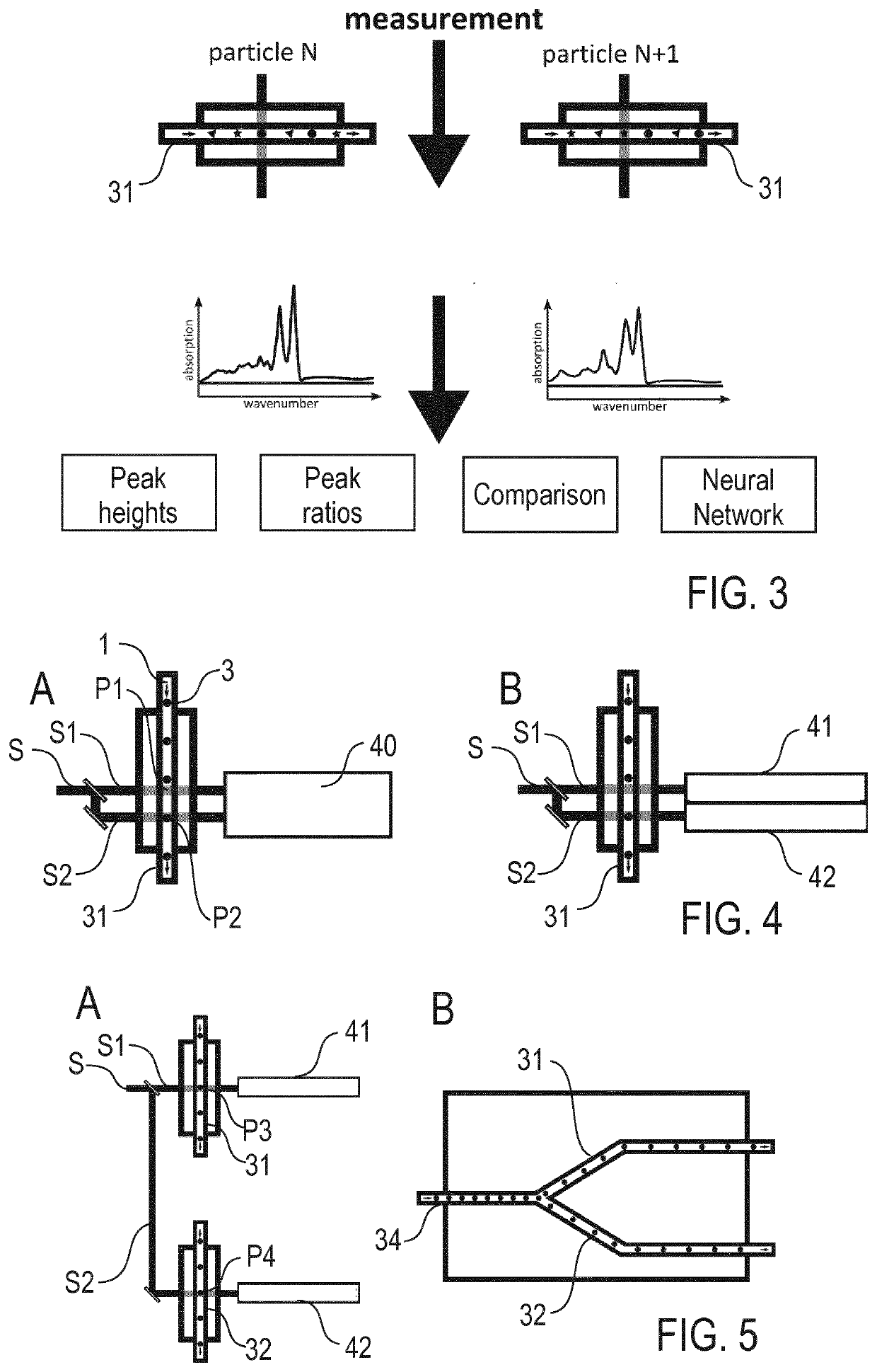Particle analysis method and apparatus for a spectrometry-based particle analysis
- Summary
- Abstract
- Description
- Claims
- Application Information
AI Technical Summary
Benefits of technology
Problems solved by technology
Method used
Image
Examples
Embodiment Construction
[0069]Key-aspects of the invention are the ability to perform broadband, temporally and / or spectrally resolved optical measurements of sample particles (e.g. living cells) in a liquid medium in the infrared with high signal-to-noise ratio on very short time-scales (milliseconds and below). This allows to achieve the following four advantageous features of the invention, which are described with further details below:
[0070]1. Broadband (e.g. from 1000-3000 cm−1 or another range as cited above) sample light beam that allow fast measurements with sufficient SNR, in particular for high throughput performance;
[0071]2. Methods and devices that allow to introduce and rapid and controlled change of the relative phase delay between the sample light beam and a probe light beam (in particular, the probe light beam can be either a portion / copy of the output of a laser source creating the sample light beam or a beam created by a second laser system coupled with the laser source creating the samp...
PUM
 Login to View More
Login to View More Abstract
Description
Claims
Application Information
 Login to View More
Login to View More - R&D
- Intellectual Property
- Life Sciences
- Materials
- Tech Scout
- Unparalleled Data Quality
- Higher Quality Content
- 60% Fewer Hallucinations
Browse by: Latest US Patents, China's latest patents, Technical Efficacy Thesaurus, Application Domain, Technology Topic, Popular Technical Reports.
© 2025 PatSnap. All rights reserved.Legal|Privacy policy|Modern Slavery Act Transparency Statement|Sitemap|About US| Contact US: help@patsnap.com



